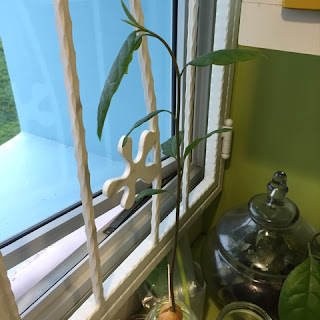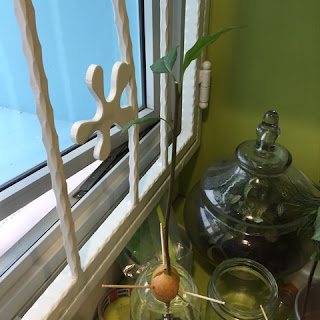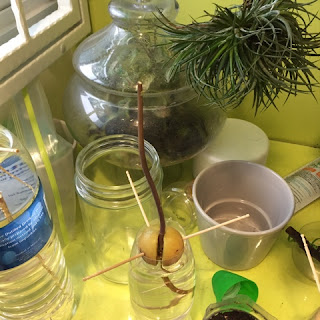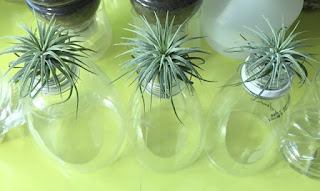Tuesday 16 June 2015
Pruned the avocado seedlings growing in water
I saw in one blog that when the avocado seedling had grown to about 6 to 7 inches, you would need to cut it the stem to 3 inches. This would allow the roots to grow well and develop strong and thicker stem. Well, I'm going to try this. I have pruned the seedlings which I have grown in water. One seedling was pruned with about 3 leaves left. Another seedling had its stem trimmed down with no leave on the stem. I'm going to see whether it will grow better or not.
Sunday 14 June 2015
Growing Lychee from seed
Just bought some Lychee fruits from the supermarket. They were very green and yet sweet. Suddenly, I had an idea to plant some Lychee seeds. I saw that I had a container with dying nerve plants. I was not sure why the nerve plants had dried up because I had tried to water it but I think it was too late. Anyway, I was wondering what I should do to the container with soil. I removed the dead plants and loosened the soil.
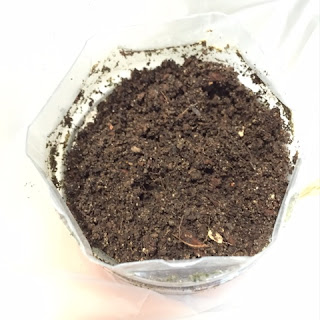 |
| Recycled pot |
I selected two seeds to put into the soil. Some seeds have weird shapes and I don't think it will make any difference. The seeds were quite small and the fruits were quite big in size. This means that it has more flesh which is good.
 |
| Lychee seeds |
I dug two holes for the seeds. I think the correct way is to place the seeds horizontally in the holes. It should not be in a vertical position, maybe I'm wronged but I think this is the right way. After that, I covered the seeds with some soils. I think the seeds are just 5mm below the soil. I water just a little bit to wet the soil.
 |
| Planting seeds into the soil |
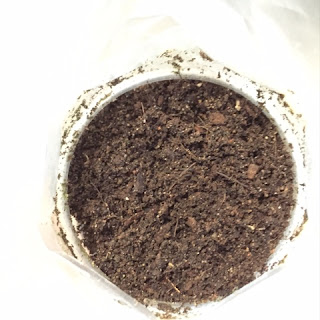 |
| Covered the seeds with soil |
Wednesday 10 June 2015
Tillandsia Ionantha Air Plant Propagation
I bought one air plant, Tillandsia Ionantha one year ago. It had flowered about 5 times and produced about four new buds. After that, it has never bloomed, only once it had failed to bloom properly. You will know when there will be a bloom when the leaves turn purple or red.
I had propagated the air plant by carefully separating buds from the main plant. You will be tempted to remove many leaves and my advice is to stop doing this. Just remove the leaves that are brown or rotten. Keep the base of the bud dry. When you are done removing the unwanted leaves, place the bud onto a plastic water opening. See the photo below. I have cut the plastic bottles into halves and used the opening as a holder. In this way, when you spray water mist onto the leaves, the base of the plant will dry quickly. The base of the plant and the leaves must dry within four hours to remain healthy.
Yes, you need to water the air plants. A lot of people, including people who sell air plants, did not know that air plants need to be watered regularly. However, you need to keep the air flow moving around the plant to avoid accumulation of stagnant water. Stagnant water in contact with the air plant will harm it. I used an air spray to spray water directly onto the leaves. If you have forgotten to water or away on long holidays, you may want to soak the whole air plant into water for 30 minutes. After 30 minutes, you need to remove the air plant from the water and shake the plant to remove excess water. Keep the plant ventilated to dry the water within 4 hours. Avoid doing this at night because the plant needs to breathe too. The three buds below were very tiny half a year ago, now they have grown bigger.
Saturday 6 June 2015
Pitcher Plant
I have managed to propagate my pitcher plant and now I have two pitcher plants. One plant is grown in a glass container and the other one is in a plastic bottle that I had D.I.Y. by myself. I have placed peat moss and perlite in a mixing ratio of 1:1. Then I added sphagnum moss on the top. I had cut a stem with about 3 leaves and then coated the cut base with rooting powder. I put the stem into the peat moss + perlite mix and kept the mix moist. I had covered the whole bottle and plant with a bag to keep it moist and high humidity. After a month, you will see new growth.
 |
| Pitcher Plant |
When the pitcher plant is small, the pitcher cup is also small. I have hung the pitcher plant near the window and it is catching the western sun for a couple of hours. I think maybe it is not getting enough sunlight as the pitcher cups have dried up. I try to give the pitcher plant distilled water everyday. The excess water will be drained away at the bottom of the bottle.
Besides water, you will need to feed the pitcher plant with small insects. The pitcher plant gets its nutrients from small insects that get trapped inside the pitfall traps. As the pitcher plant is mostly kept indoors, there are not many insects that can crawl into the traps. So, I assisted the pitcher plant by putting insects into the traps. Here is the trap with insects in it. I think I have placed a dead insect into the trap and ants may have been attracted by the dead insects and fell into the trap.
 |
| Insects in the pitfall trap |
Subscribe to:
Posts (Atom)
